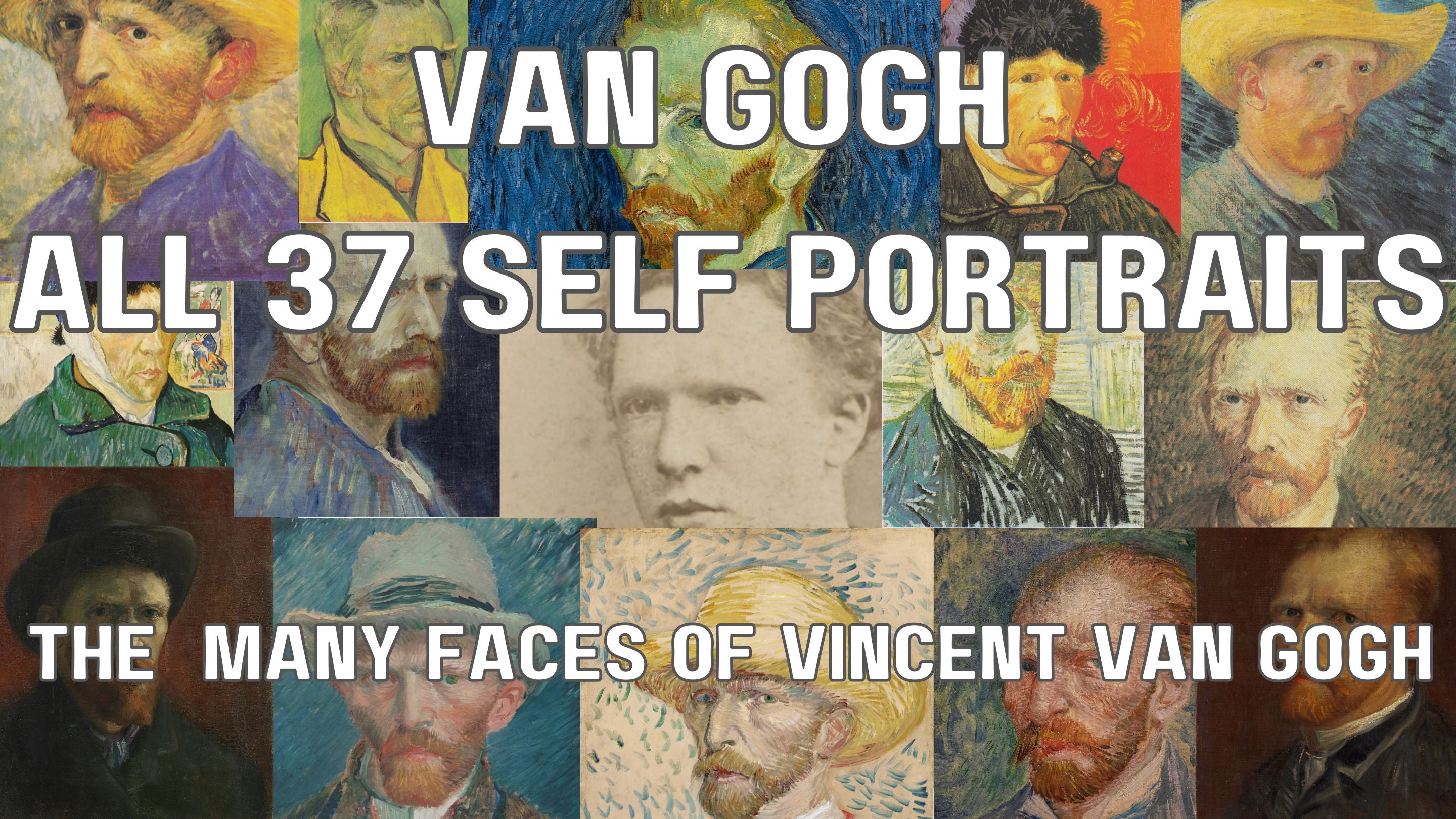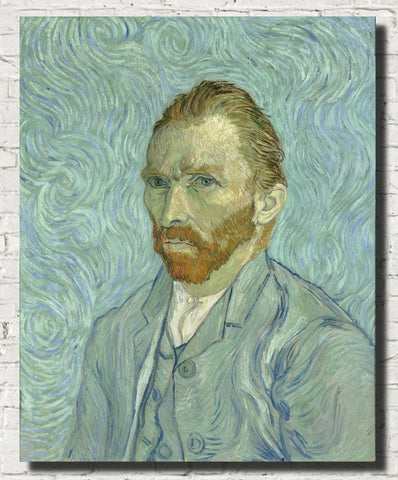Introduction
Vincent van Gogh, the iconic Dutch Post-Impressionist painter, left an indelible mark on the art world with his vibrant and emotionally charged works. Among his extensive portfolio, his self-portraits stand out as windows into the artist's soul. In this exploration, we delve into the significance of Vincent van Gogh's self-portraits, dissecting the emotions, techniques, and stories behind these captivating pieces.
The Evolution of Van Gogh's Self-Portraits
Early Years - A Glimpse into the Struggle
Van Gogh's early self-portraits reflect his tumultuous journey in finding his artistic identity. The "Self-Portrait with Pipe" (1886) and "Self-Portrait with Straw Hat" (1887) reveal a young artist experimenting with different styles, still searching for his unique voice. These pieces emanate a sense of introspection, hinting at the challenges he faced during this period.
The Impact of Paris - A Flourish of Color
Upon moving to Paris, Van Gogh's self-portraits underwent a transformative phase. The "Self-Portrait with Bandaged Ear" (1889) is a poignant example, painted after the infamous incident where he severed his own ear. The bold use of color and expressive brushstrokes convey the intensity of his emotional state. Parisian influence is evident, with Van Gogh embracing vibrant hues and impressionistic techniques.
Saint-Rémy and the Asylum - A Glimmer of Hope
During his stay at the Saint-Paul-de-Mausole asylum in Saint-Rémy, Van Gogh continued to create self-portraits, such as the haunting "Self-Portrait with Cropped Hair" (1889). These pieces are marked by an introspective gaze and raw emotion, revealing the artist's struggles with mental health. Despite the challenges, these portraits also capture moments of resilience and hope, reflecting Van Gogh's unwavering passion for his craft.
Arles - A Symphony of Sunflowers and Self-Reflection
Van Gogh's time in Arles was marked by a burst of creativity, evident in the series of self-portraits he produced. Notable among them is the "Self-Portrait with Sunflowers" (1888), where he incorporates elements of the iconic sunflower series into his self-representation. The play of light and color reflects the optimism and artistic fervor that characterized this period of his life.
The Emotional Palette of Van Gogh's Self-Portraits
Loneliness and Isolation
Many of Van Gogh's self-portraits exude a profound sense of loneliness and isolation. The solitary figures, often with piercing gazes, convey the artist's inner struggles and the challenges he faced in forming meaningful connections. The "Self-Portrait with Grey Felt Hat" (1887) is a poignant example, where the somber color palette and downcast expression evoke a sense of melancholy.
Intensity of Emotion
Van Gogh's ability to infuse his self-portraits with intense emotion is a testament to his mastery of expression. The swirling, dynamic brushstrokes in the "Self-Portrait with Bandaged Ear" (1889) not only depict physical pain but also communicate the artist's emotional turmoil. Each stroke seems to capture the turbulence within Van Gogh's mind, offering viewers a visceral experience of his inner world.
Reflections of Resilience
Amidst the struggles depicted in his self-portraits, there are moments of resilience and determination. The "Self-Portrait with Grey Felt Hat" (1886) and "Self-Portrait with Pipe" (1889) showcase a sense of self-assurance, hinting at Van Gogh's unwavering commitment to his art despite personal challenges. These portraits serve as visual affirmations of the artist's enduring spirit.
Decoding Van Gogh's Technique
Bold Use of Color
Van Gogh's self-portraits are characterized by his distinctive use of color. The artist employed a bold and expressive palette, often using complementary colors to create dynamic contrasts. This technique not only heightened the emotional impact of his works but also contributed to the overall vibrancy and uniqueness of each piece.
Expressive Brushstrokes
The iconic swirling and expressive brushstrokes synonymous with Van Gogh's style are prominently featured in his self-portraits. This technique, known as impasto, adds texture and depth to the paintings, allowing viewers to feel the energy and passion behind each stroke. The "Self-Portrait with Bandaged Ear" (1889) exemplifies this technique, as the turbulent brushstrokes mirror the emotional turbulence within the artist.
Symbolism and Personal Motifs
Van Gogh infused his self-portraits with personal symbolism, using objects and motifs to convey deeper meanings. The sunflowers in the "Self-Portrait with Sunflowers" (1888) symbolize the artist's quest for enlightenment and the connection between art and nature. Understanding these symbolic elements adds layers of complexity to the interpretation of his self-portraits.
Frequently Asked Questions
FAQ 1: Why did Van Gogh paint so many self-portraits?
Answer: Van Gogh's self-portraits served as a means of self-exploration and self-expression. They allowed him to experiment with different techniques, document his evolving style, and convey his emotions. Additionally, self-portraiture provided a readily available subject during times when models were scarce.
FAQ 2: What is the significance of the bandaged ear in Van Gogh's self-portraits?
Answer: The bandaged ear in Van Gogh's self-portraits, notably in the "Self-Portrait with Bandaged Ear" (1889), symbolizes his personal struggles and the challenges he faced, including the infamous incident where he severed his own ear. It serves as a poignant reminder of the artist's mental health battles.
FAQ 3: How did Van Gogh's mental health influence his self-portraits?
Answer: Van Gogh's mental health struggles significantly influenced the emotional depth and intensity of his self-portraits. The periods of isolation and inner turmoil are palpable in the raw emotion depicted in these works, providing a visual narrative of the artist's psychological state.
FAQ 4: What role did symbolism play in Van Gogh's self-portraits?
Answer: Symbolism played a crucial role in Van Gogh's self-portraits, allowing him to convey deeper meanings and emotions. Objects such as sunflowers, hats, and bandaged ears were laden with personal significance, adding layers of complexity to the narrative within each portrait.
FAQ 5: How did Van Gogh's technique evolve over the course of his self-portraits?
Answer: Van Gogh's technique evolved significantly in his self-portraits. From the early, more subdued works to the later vibrant and expressive pieces, his use of color and brushstrokes became increasingly bold. This evolution reflects not only his artistic experimentation but also his journey of self-discovery.
Conclusion
Vincent van Gogh's self-portraits are more than mere reflections; they are windows into the artist's soul. From the early struggles to the triumphant moments, each portrait tells a story of resilience, passion, and self-discovery. By decoding the emotional palette and technical nuances, we gain a deeper appreciation for the artistic genius that continues to captivate and inspire generations.
Prints and Canvas Panels
Prints and canvas panels of the curated selection of Van Gogh self portraits are available in a wide range of sizes.







